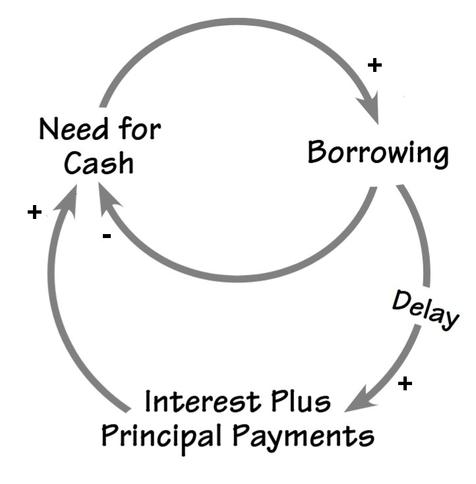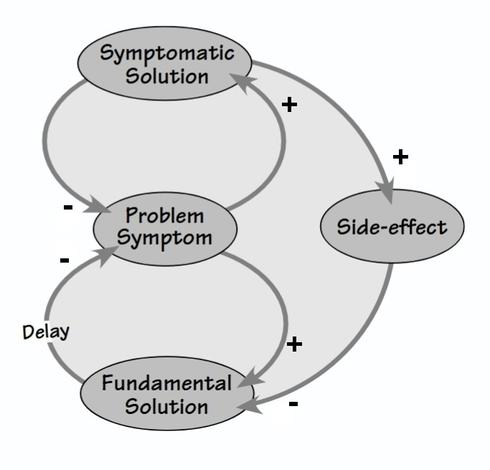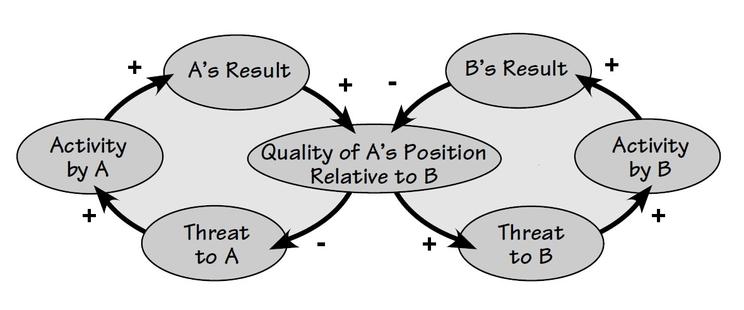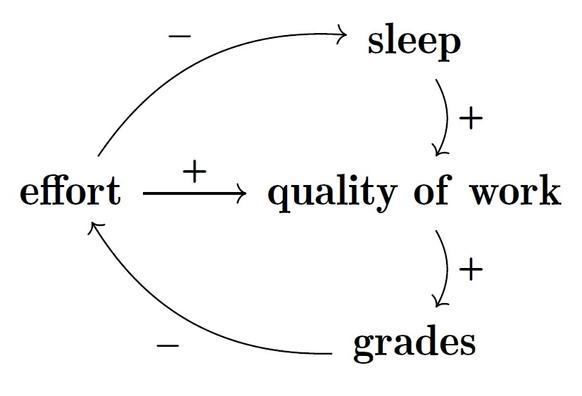I've been working with @Adittya on modeling systems in this simple way, as graphs with edges labeled by signs {+,-} or element of more general monoids. Our paper is out now:
• John Baez and Adittya Chaudhuri, Graphs with polarities, http://math.ucr.edu/home/baez/polarities.pdf
Abstract. In fields ranging from business to systems biology, directed graphs with edges labeled by signs are used to model systems in a simple way: the nodes represent entities of some sort, and an edge indicates that one entity directly affects another either positively or negatively. Multiplying the signs along a directed path of edges lets us determine indirect positive or negative effects, and if the path is a loop we call this a positive or negative feedback loop. Here we generalize this to graphs with edges labeled by a monoid, whose elements represent ‘polarities’ possibly more general than simply ‘positive’ or ‘negative’. We study three notions of morphism between graphs with labeled edges, each with its own distinctive application: to refine a simple graph into a complicated one, to transform a complicated graph into a simple one, and to find recurring patterns called ‘motifs’. We construct three corresponding symmetric monoidal double categories of ‘open’ graphs. We study feedback loops using a generalization of the homology of a graph to homology with coefficients in a commutative monoid. In particular, we describe the emergence of new feedback loops when we compose open graphs using a variant of the Mayer–Vietoris exact sequence for homology with coefficients in a commutative monoid.
(5/n)




